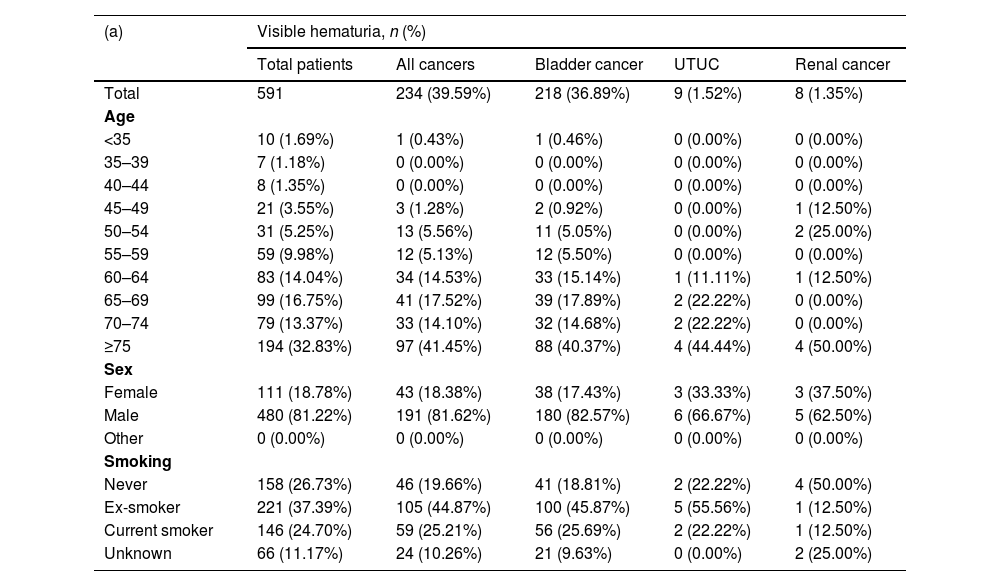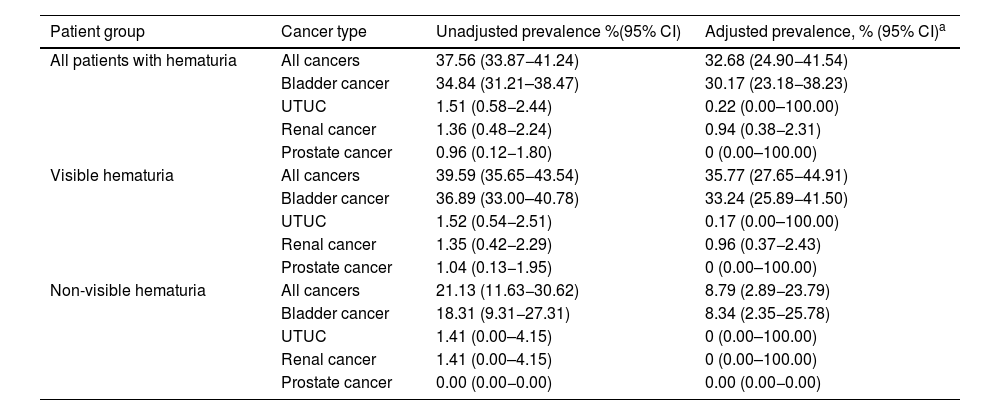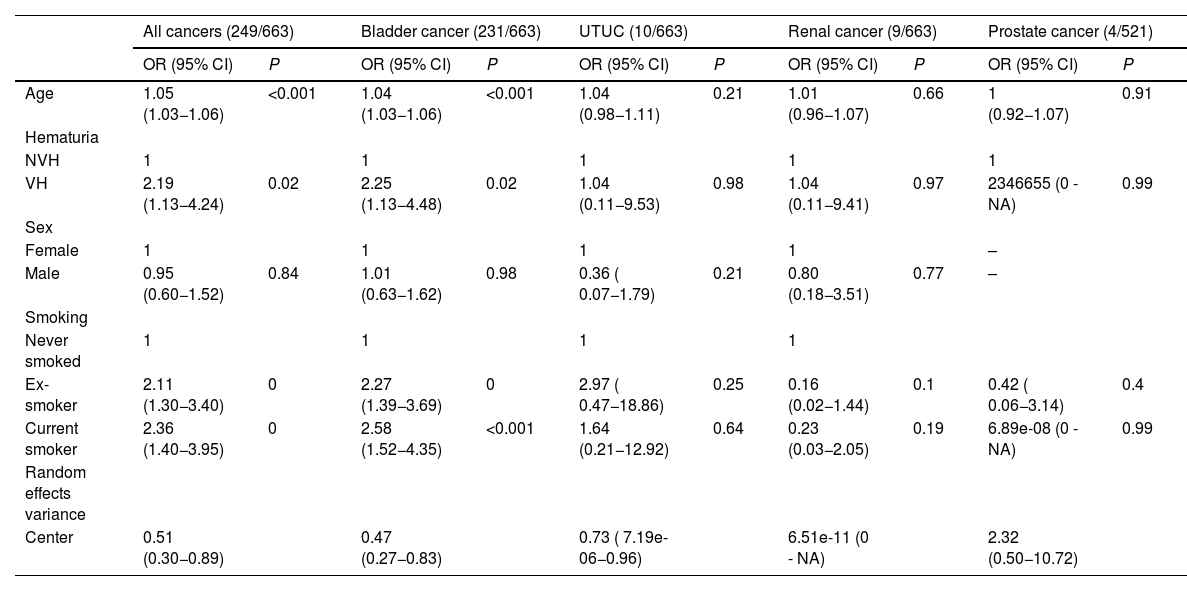Malignant tumors of the urinary tract are associated with high morbidity and mortality, and their prevalence can vary worldwide. Recently, the IDENTIFY study has published results on the prevalence of urinary tract cancer at a global level. This study evaluates the prevalence of cancer within the Spanish cohort of the IDENTIFY study to determine whether the published results can be extrapolated to our population.
Patients and methodsAn analysis of the data from the Spanish cohort of patients in the IDENTIFY study was performed. This is a prospective cohort of patients referred to secondary care with suspected cancer, predominantly due to hematuria. Patients were recruited between December 2017 and December 2018.
ResultsA total of 706 patients from 9 Spanish centers were analyzed. Of these, 277 (39.2%) were diagnosed with cancer: 259 (36.7%) bladder cancer, 10 (1.4%) upper tract urothelial carcinoma, 9 (1.2%) renal cancer and 5 (0.7%) prostate cancer. Increasing age (OR 1.05 (95% CI 1.03−1.06; P < 0.001)), visible hematuria (VH) OR 2.19 (95% CI 1.13–4.24; P = 0.02)) and smoking (ex-smokers: OR 2.11(95% CI 1.30–3.40; P = 0.002); smokers: OR 2.36 (95% CI 1.40–3.95; P = 0.001)) were associated with higher probability of bladder cancer.
ConclusionThis study highlights the risk of bladder cancer in patients with VH and smoking habits. Bladder cancer presented the highest prevalence; higher than the prevalence reported in previous series and presented in the IDENTIFY study. Future work should evaluate other associated factors that allow us to create cancer prediction models to improve the detection of cancer in our patients.
Los tumores malignos del tracto urinario están asociados a gran morbilidad y mortalidad siendo su prevalencia variable a nivel global. Recientemente el estudio IDENTIFY ha publicado resultados sobre la prevalencia del cáncer del tracto urinario a nivel internacional. Este estudio evalúa la prevalencia de cáncer dentro de la cohorte española del estudio IDENTIFY para determinar si los resultados publicados son extrapolables a nuestra población.
Material y métodosSe realizo un análisis de los datos de la cohorte de pacientes españoles del estudio IDENTIFY. Se trata de una cohorte prospectiva de pacientes derivados al hospital con sospecha de cáncer, predominantemente por hematuria. Los pacientes fueron reclutados entre diciembre de 2017 y diciembre de 2018.
ResultadosEn total 706 pacientes procedente de 9 centros españoles fueron analizados. 277(39,2%) fueron diagnosticados de cáncer, 259(36.7%) cáncer vejiga, 10(1.4%) tracto urinario superior, 9 (1.2%) renal y 5 (0.7%) próstata. El aumento de la edad (OR 1,05(95%CI 1,03−1,06;<0,001)), presencia de hematuria visible OR 2,19(95%CI1,13−4,24;P = 0,02)) y el hábito tabáquico (exfumadores:OR2,11(95%CI1,30−3,40;P = 0,002); fumadores:OR2,36(95%CI 1,40−3,95;P = 0,001)) se asocia con mayor probabilidad de cáncer vesical.
ConclusiónEste estudio resalta el riesgo que existe en pacientes con HV y habito tabáquico de presentar cáncer de vejiga. El cáncer de vejiga presentó la mayor prevalencia, siendo esta mayor que la expuesta en series previas y la presentada en el estudio IDENTIFY. Trabajos futuros deben evaluar otros factores asociados que permitan crear modelos de predicción de cáncer para seguir aumentando la detección de estos en nuestros pacientes.










